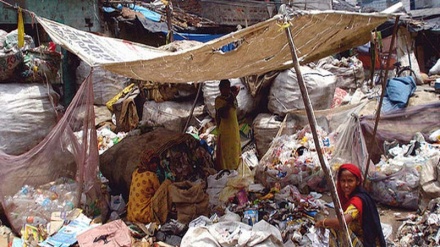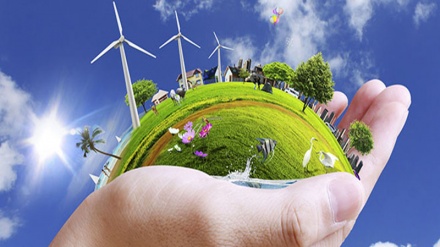We only have one planet to live on (10)
Today, we study the topic of contamination of seas and oceans.
One of the problems which currently threaten the environment is the contamination of seas and oceans. According to first article of Kuwait regional convention, marine contamination is defined as entry of a material or type of energy in the marine environment by mankind, in a direct or indirect manner, such that it would negatively impact living creatures; endanger human health; obstruct marine activities such as fishing; and lower the quality of water throughout seas. Based on this definition, it can be said that currently seas and oceans are increasingly exposed to contamination. The pollution of seas partly results from discharge of reserves of ships and oil tankers; industrial, household, plant, livestock, mineral, and chemical wastes. These are the most important pollutants of sea waters. Hence, the destruction of the environment of seas is not solely caused by irregular and illogical usage of natural sources. In fact, the root cause of contamination of seas and oceans is man’s discharge of wastes and garbage in them.
In accordance to the studies which have been carried out, more than three fourth of the contaminations of seas and oceans originate from lands. These pollutants of seas are either directly discharged from land, or poured into seas via rivers. According to UN, in the year 1997, nearly 70% of the wastewater discharged in the Atlantic Ocean was not previously refined. Based on a recent report of the UN on Mediterranean regions, roughly 7.1bn cubic meters of urban wastes are directly discharged in the Mediterranean Sea; three fourth of which have not been refined. Meanwhile, the developing countries, which face a swift growth of population and lack of financial sources, fail to find a solution to the problem of environmental pollution. For instance, the Alexandria Bay in Egypt has been poisoned by discharge of wastewater to an extent that this part of the Mediterranean Sea is void of any living creatures.
Although the usage of pesticides and insecticides leads to provision of sufficient food for some of the residents of the planet; people remain unaware of the detriments of usage of such chemicals.
Dr. Ray Griffiths, the former head of the Marine Pollution Research Unit of the Intergovernmental Oceanographic Commission, affiliated to UNESCO, believes that some of these chemicals head for rivers and consequently pour into seas and can possibly impact the growth of marine living creatures. Also, they might change the lives of plants, floating on the surface of the sea and harm the process of photosynthesis in plants. Moreover, the phosphates and nitrates that exist in chemical fertilizers, which indirectly pour into seas, can lead to excessive growth of algae. The poisons within algae grow in the body of animals, who feed from water, such as large fish, which makes consumption of these fish harmful. The growth of these algae can also lead to excessive consumption of oxygen which is dissolved in water, thereby suffocating local marine creatures. In this manner, throughout the regions, which these algae exist, the lives of other living creatures are endangered and are pushed toward the verge of extinction. Scientists, in their recent studies, have identified more than 400 regions which are void of any living creature within the marine ecosystems. For instance, the UN has recently warned that throughout the Mediterranean and Black Seas, there is no trace of dissolved oxygen at depths higher than 200 meters, which in turn restricts the living environment of marine creatures.
In addition to poisons, and chemical fertilizers, industrial pollutants also deal a blow against seas and oceans. For instance, the producers of pulp pour 300,000 tons of products covered with chlorine and mercury into the Baltic Sea per annum, saturating these waters with industrial pollutants. Worldwide industries discharge their wastes in water currents and their gases into air. For instance, every year, 66 billion cubic meters of industrial waste are discharged into the Mediterranean Sea. Oceans absorb large volumes of mineral oils, detergents, phosphates and heavy metals such as lead, copper, and zinc via the processes of excavation of metals. In addition to the pollutants that pour into seas and oceans via rivers, nearly one third of air pollutants also enter the seas in the form of rainfall. Out of the seven billion tons of carbon dioxide which is produced due to human activities per year, at least two billion tons enter the oceans. Although oceans naturally refine and purify the gases in atmosphere, their recycling capacity is limited.
The solid wastes, plastics, and other objects which find their ways from land into seas are other pollutants which can seriously harm the marine living creatures, and lead to their death. The marine mammals, fish, and birds mistakenly take these wastes as food and eat them, which is fatal for their lives. In a number of regions, the oceanic currents lead to accumulation of large volumes of plastics and other solid wastes, gradually covering vast lands.
In the past, plastic wastes had generated concerns over the health of marine environments. However, the actual volume of these wastes remained unknown. In the recent years, a group of researchers, from six countries, have collected data, throughout their oceanic studies and have found out that over five trillion large and small pieces of plastic have been thrown at oceans across the globe, which seriously endangers the health of these oceans. According to scientists, if this trend continues in the future, many aquatic species will be endangered.
Despite the prohibition of discharge of wastes into oceans, it is foreseen that ships throw more than 500,000 pieces of plastic items and bags into oceans every single day. The floating wastes usually cause wounds, suffocation, infection and death of birds and marine creatures. Hence, plastic wastes pose a serious threat against marine ecosystems, ultimately hitting human beings.
MR/ME


